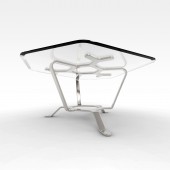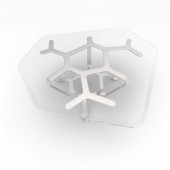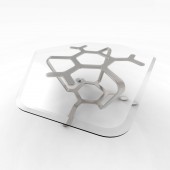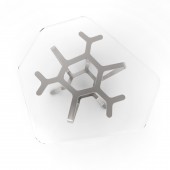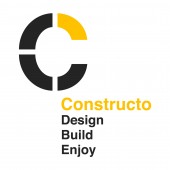Dendrone Table by Javier Olmeda Raya |
Home > Winners > #32058 |
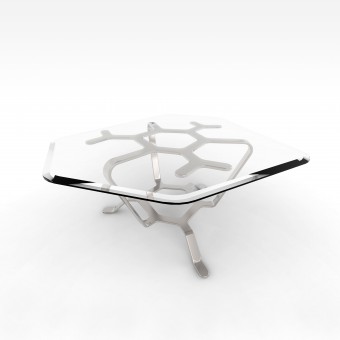 |
|
||||
| DESIGN DETAILS | |||||
| DESIGN NAME: Dendrone PRIMARY FUNCTION: Table INSPIRATION: Formal explorations derived from natural formations, such as closed packing systems found in Nature (cells, minerals, and some fruits and vegetables), can be geometrically described with 3D surface modeling tools using Voronoi diagrams to generate complex polygonal shapes, which are later digitally fabricated with CNC laser and water-jet technologies. UNIQUE PROPERTIES / PROJECT DESCRIPTION: A complex geometry designed in a parametrically-orien OPERATION / FLOW / INTERACTION: Interaction with the end user is at a passive level. The base and the glass tabletop are complex shapes that promote a fluid setting, as non-square geometries tend to yield other types of movement around the object. The table obliges the end user to watch it form different angles. PROJECT DURATION AND LOCATION: Design process started during mid-December 2013 in my studio in Santurce, Puerto Rico. A client of mine asked me to design a unique piece for his living room. He wanted "a light, transparent and fluid conversation piece". Currently the table is in the production phase. FITS BEST INTO CATEGORY: Furniture Design |
PRODUCTION / REALIZATION TECHNOLOGY: Rhinoceros and Grasshopper are the softwares used to model objects within a parametric environment, in which many production-wise concerns are integrated in the early stages of design. What we end with is an quasi-organic model capable of adapting to specific needs, taking into account material, economic and structural considerations. Rolled steel flatbars are welded to CNC laser-cut thick steel profiles to create a three-dimensional object. A beveled, laminate glass serves as the tabletop. SPECIFICATIONS / TECHNICAL PROPERTIES: 990 mm (W) x 860 (D) x 380 (H) TAGS: table, coffee table, furniture design, parametric design, design build RESEARCH ABSTRACT: My research has been focused on parametric modeling techniques applied to furniture and interior design. As a designer and a small-scale manufacturer, I've been always concerned with integrating design and construction processes through digital design software and fabrication tools. We've developed a way to build working models parametrically in which every part is geometrically associated with each other in order to develop the whole object. Thus the process is more fluid and the designer has more control of the product. CHALLENGE: Arriving at a fully functional 3D model in which every aspect is taken into account, from conception to final product has been a great challenge. Moreover, the possibility of creating object families with a few tweaks and clicks, opens up the range of solutions. This has enabled us to create an unique design-to-production workflow. As digital technologies become more available to designers, mass customization and complex geometries may be achieved at almost the same costs as mass production. ADDED DATE: 2014-01-26 17:11:48 TEAM MEMBERS (1) : IMAGE CREDITS: Image #1: Javier Olmeda Raya, Dendrone, 2014 Image #2: Javier Olmeda Raya, Dendrone, 2014 Image #3: Javier Olmeda Raya, Dendrone, 2014 Image #4: Javier Olmeda Raya, Dendrone, 2014 Image #5: Javier Olmeda Raya, Dendrone, 2014 |
||||
| Visit the following page to learn more: http://constructodigital.com | |||||
| AWARD DETAILS | |
 |
Dendrone Table by Javier Olmeda Raya is Winner in Furniture Design Category, 2013 - 2014.· Read the interview with designer Javier Olmeda Raya for design Dendrone here.· Press Members: Login or Register to request an exclusive interview with Javier Olmeda Raya. · Click here to register inorder to view the profile and other works by Javier Olmeda Raya. |
| SOCIAL |
| + Add to Likes / Favorites | Send to My Email | Comment | Testimonials | View Press-Release | Press Kit |
Did you like Javier Olmeda Raya's Furniture Design?
You will most likely enjoy other award winning furniture design as well.
Click here to view more Award Winning Furniture Design.


